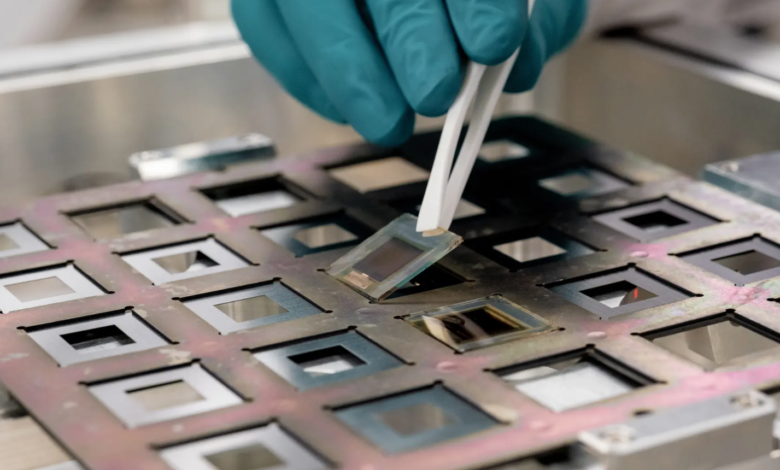Perovskite photovoltaic cells, new world record for efficiency

Next objective: perovskite photovoltaic cells with 25 years of stability
(sustainabilityenvironment.com) – Perovskite photovoltaic cells have finally reached the commercial phase. From the first commercial line opened in 2021 in Poland by Saule Technologies to the German factory of tandem units built by Oxford PV, perovskite is timidly entering the market. But in several international laboratories we are still working to increase its performance. The latest result comes from a group of scientists from the National University of Singapore (NUS), which used a new interface material to make a record-breaking perovskite solar cell. The unit has an active area of 1 cm2 and is capable of converting 24.35% of incident light into electricity.
Read also Photovoltaic in perovskite triple junction, efficiency is record
Prior to the NUS venture, the best 1 cm2 perovskite cell – the standard size used for benchmarking – boasted an efficiency of 23.7%. “This work represents the first example of perovskite cell with inverted structure that surpasses the perovskite photovoltaic cells in standard architecture”, explains Professor Hou Yi, head of the research group. “This is mainly attributed to the innovative charge transporting material incorporated in our perovskite solar cells. Since inverted-structure perovskite solar cells always offer excellent stability and scalability, achieving a higher efficiency than for normal-structured perovskite cells represents a significant milestone in commercialising this cutting-edge technology.”
The result has allowed the innovation of the NUS to enter by right in the “Tables of efficiency of solar cells“, publication that reports the maximum efficiencies independently confirmed for cells and solar modules.
But the Hou team does not want to stop here and is already working to further improve the stability of perovskite photovoltaic against moisture.
“We are developing a customised accelerating aging methodology to bring this technology from the lab to the fab. One of our next goals is to deliver perovskite solar cells with 25 years of operational stability.”





